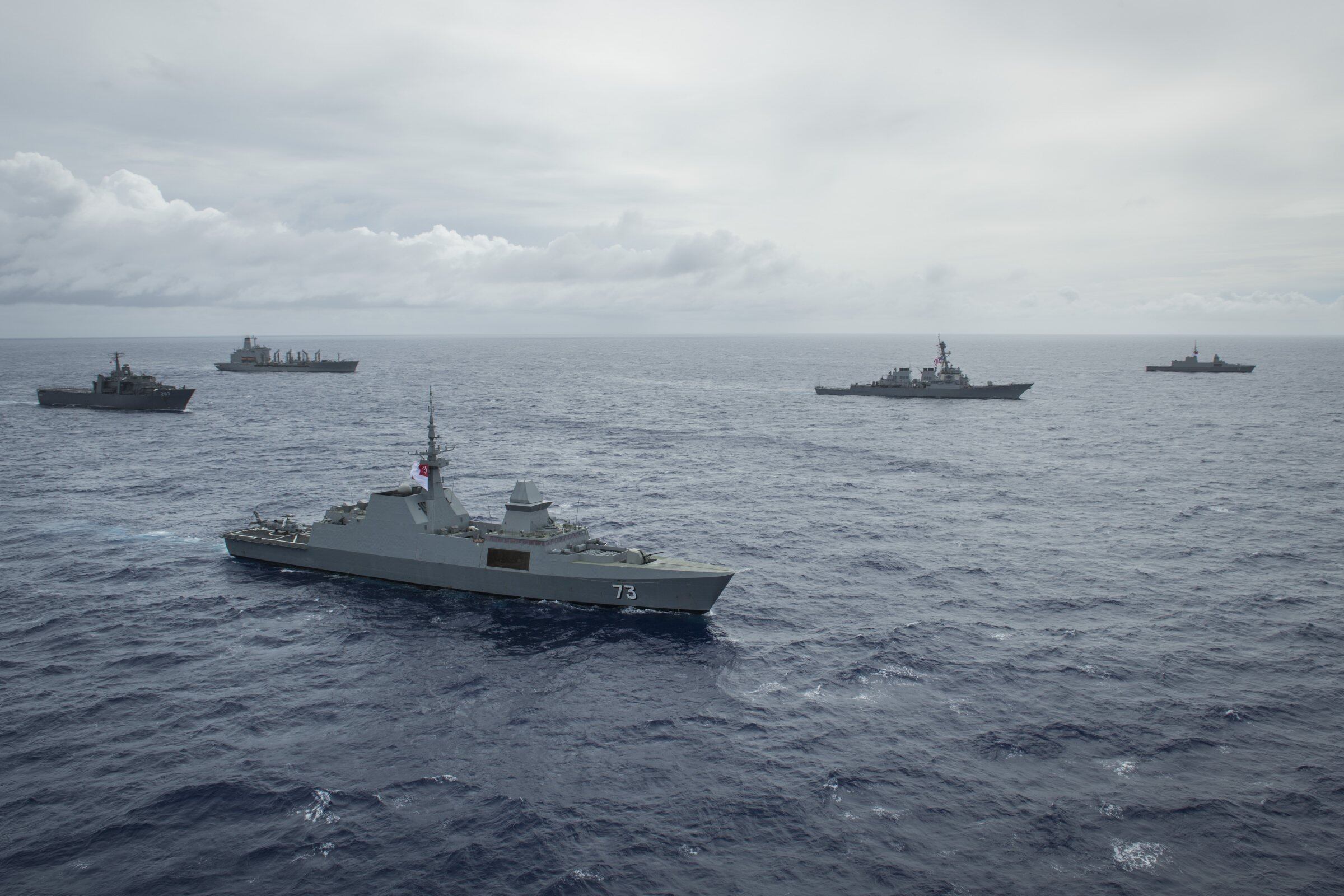MELBOURNE, Australia — Singapore has commissioned the second and third locally built littoral mission vessels into its Navy, as the lead ship of the class deploys overseas for the first time.
The two ships, RSS Sovereignty and RSS Unity, were inducted into the Republic of Singapore Navy at a ceremony Tuesday at RSS Singapura, one of the service’s two main bases.
Speaking at the commissioning ceremony, Defence Minister Ng Eng Hen called the ships a “quantum jump” compared to its Fearless-class predecessors, highlighting its features such as the integrated bridge and mast as well as its lean crew complement of 30 personnel.
Ng also added that lead ship RSS Independence, which had been commissioned in May, recently left for its maiden overseas deployment as part of a Navy task group, participating in a regional maritime exercise in the Gulf of Thailand before taking part at an international fleet review at Pattaya, Thailand.
Singapore will eventually operate eight of the 80-meter littoral mission vessels, or LMV, with the fifth ship having already been launched by builder ST Marine in September this year. The last of the ships are expected to be commissioned in 2020, and they will replace 11 Fearless-class, 55-meter patrol vessels, which are progressively being withdrawn.
RELATED

Jointly developed by the Navy and Singapore’s Defence Science and Technology Agency, the LMVs are multimission ships designed with modularity and flexibility in mind. While modestly armed, the ships can be fitted with a variety of mission modules including containerized systems to perform a range of maritime security tasks such as mine countermeasures, humanitarian assistance and anti-piracy.
The ships also have a unique twin stern ramp from Palfinger Marine Norway AS used for the quick launch and recovery of small boats and unmanned surface vessels of up to 11 meters in length. The ships are also equipped with a helicopter landing pad for a medium-sized helicopter that can potentially be used for both unmanned aircraft and helicopter operations.
The LMVs were recently observed with Aeronautical & General Instruments Limited’s Advanced Stabilised Glide Slope Indicator at the rear of the ship’s superstructure to assist with helicopter landing operations.
And according to Lt. Col Chew Chun Chau, head of the LMV project office, the Navy is putting the LMVs’ helicopter capabilities through trials using the Republic of Singapore Air Force’s Lockheed Martin S-70B Seahawk and Airbus AS332M/M-1 Super Puma helicopters.
Singapore currently operates six S-70Bs, primarily in the anti-submarine role aboard the Navy’s Formidable-class frigates. Two additional Seahawks are on order and will be delivered at the end of this year, according to David Boey, a member of Singapore’s Advisory Council on Community Relations in Defence.
However another source close to the program has told Defense News that the helicopters will only arrive in Singapore at the beginning of 2018. Singapore’s Seahawks are equipped with the Telephonics AN/APS-143 maritime surveillance radar and L-3 Ocean Systems Helicopter Long-Range Active Sonar, the latter as part of its anti-submarine warfare suite.
A Southeast Asian island state strategically located where the busy Strait of Malacca meets the South China Sea, Singapore is heavily dependent on the commercial maritime traffic that passes by it neighborhood, which has had its share of maritime security challenges that include piracy.
The country is also a security partner of the United States and has been a strong supporter of U.S. military presence in the region, hosting logistics hubs for visiting U.S. warships and aircraft as well as rotational deployments of U.S. Navy littoral combat ships.
Mike Yeo is the Asia correspondent for Defense News.








